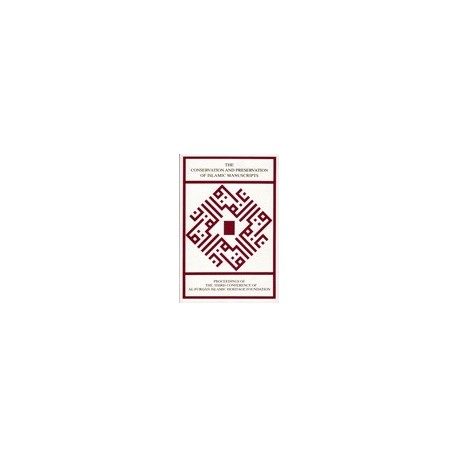Panier
0
Produit
Produits
(vide)
Aucun produit
À définir
Livraison
0,00 €
Total
Produit ajouté au panier avec succès
Quantité
Total
Il y a 0 produits dans votre panier.
Il y a 1 produit dans votre panier.
Total produits
Frais de port
À définir
Total
Meilleures ventes
-

Parler tunisien fissa !
32,00 € -

-

-

La cuisine algérienne
35,00 € -

Les prairies d'or 5 tomes
150,00 € -

-

-

-

-

Miniatures & Peintures
-
Français
- Langue
- Littérature
- Religions
- Droit Economie
- Art
- Arts de vivre
- Jeunesse
- Sciences humaines
- Histoire Géographie
- Arabe
- نوادر الكتب
- LIVRES RARES
Nouveaux produits
-

-

-

-

-

-

-

نفاضة الجراب في علالة الاغتراب
180,00 € -

إكمال الأعلام بتثليث الكلام مجلدين
450,00 €
-

Sahîh al-Boukhârî - Collection des 5 tomes
200,00 € 220,00 €
Déjà vus
 Agrandir l'image
Agrandir l'image
Conservation and Preservation of Islamic Manuscripts
Al-Furqan islamic heritage foundation
1-873992-19-10
Since it was launched in 1991 (1412 AH) al-Furqan Islamic Heritage Foundation's vital lines of activity was its survey of collections of Islamic manuscripts worldwide, including a general description of each collection and the conditions in which it is kept.
The Foundation now holds a regular, bi-annual conference on a theme connected with the Islamic...
Caractéristiques
| Auteur | Collectif |
| Editeur | Al-Furqan islamic heritage foundation |
| ISBN | 1-873992-19-10 |
| EAN-13 | 9781873992197 |
| Date de parution | 1996 |
| Nombre de pages | 212 |
| Dimensions | 12 cm x 20 cm |
| Poids | 100 g |
Résumé
Since it was launched in 1991 (1412 AH) al-Furqan Islamic Heritage Foundation's vital lines of activity was its survey of collections of Islamic manuscripts worldwide, including a general description of each collection and the conditions in which it is kept.
The Foundation now holds a regular, bi-annual conference on a theme connected with the Islamic manuscript, given that this is a repository of knowledge which has been handed down to us after long years of neglect.
The Islamic manuscript embodies important technical achievements in the art of the book: the various schools of binding and the different uses of parchment and paper, of which important traditional methods of preparation and manufacture have only been partially preserved. Similarly with ink, whose ingredients were combined with such skill to make black and coloured inks. The Foundation devoted this conference, which was held on 18th - 19th November 1995, to matters relating to the conservation and preservation of Islamic manuscripts.
In any study of the art of manuscript preservation, due regard must be given to the skills of its early practitioners. They developed innovative preservation practices based on sound knowledge of the primary organic materials of which early books were composed. It is important to closely examine modern preservation techniques particularly in the areas of fumigation and restoration by which present-day institutions hope to refine existing methods of manuscript cleaning and repair.
The approach of this conference has thus been to introduce the conservation and preservation work of specialist laboratories in libraries which hold manuscript collections, particularly in the Muslim World. Valuable contributions were received in field reports from laboratories in Egypt, India, Morocco, Palestine, Saudi Arabia, Tunisia, the United Kingdom, and the Vatican.
The conference papers provide us with a rich source of intellectual debate on a number of themes. The Foundation hopes, one day, to publish the work of scholars specialising in this field, which we might call 'Ilm al-Khitatah (codicology).
Some of the contributors expressed their concern for the preventive maintenance of Islamic manuscripts, stressing the ways in which manuscripts can be protected from adverse climatic conditions and other causes of damage. The Foundation is proud to note that some of the conference papers make new contributions to the field, and that others describe Arab research initiatives in the development of specialist instruments and methods designed to analyse coloured materials and inks in manuscripts, without the need to take samples.




